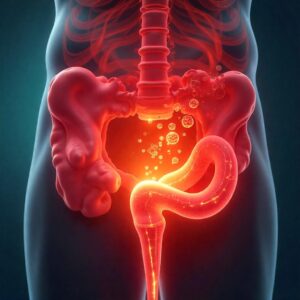Introduction
Urinary Tract Infections (UTIs) are among the most common infections affecting people worldwide. They can occur in anyone, but are particularly prevalent among women. Understanding UTIs is essential for prevention, timely diagnosis, and effective treatment. This comprehensive guide delves into the intricacies of UTIs, including their causes, symptoms, treatment options, and preventive measures.

What Are Urinary Tract Infections?
Urinary Tract Infections (UTIs) occur when harmful bacteria enter the urinary tract, leading to inflammation and infection. The urinary tract consists of the kidneys, ureters, bladder, and urethra. UTIs can be classified into different types based on the part of the urinary tract affected:
- Cystitis: Infection of the bladder.
- Urethritis: Infection of the urethra.
- Pyelonephritis: Infection of the kidneys, which can be more severe and may require hospitalization.
Statistics indicate that UTIs affect millions of people each year, with women experiencing a higher incidence due to anatomical differences. According to the CDC, about 60% of women will experience at least one UTI in their lifetime.
The Anatomy of the Urinary Tract: Understanding How UTIs Occur
To grasp how UTIs develop, it’s important to understand the anatomy of the urinary tract:
- Kidneys: Filter waste from the blood and produce urine.
- Ureters: Tubes that transport urine from the kidneys to the bladder.
- Bladder: A muscular sac that stores urine until it is expelled.
- Urethra: The duct through which urine exits the body.
The urinary tract is designed to prevent infections, but factors such as improper hygiene, urinary retention, or the introduction of bacteria from the outside can lead to UTIs. Bacteria, primarily Escherichia coli (E. coli), are the most common culprits, often originating from the gastrointestinal tract.

Common Causes of Urinary Tract Infections
Several factors can increase the risk of developing a UTI:
- Gender: Women are more prone to UTIs due to their shorter urethra, which allows bacteria easier access to the bladder.
- Sexual Activity: Sexual intercourse can introduce bacteria into the urinary tract.
- Urinary Retention: Incomplete emptying of the bladder can create a breeding ground for bacteria.
- Catheter Use: Catheters can introduce bacteria directly into the bladder.
- Abnormalities in the Urinary Tract: Structural issues can hinder proper urine flow and increase infection risk.
- Diabetes: High blood sugar levels can promote bacterial growth.
Understanding these risk factors is crucial for prevention and management strategies.
Symptoms of UTIs: How to Identify Them
Recognizing the symptoms of a UTI can lead to prompt treatment and prevent complications. Common symptoms include:
- Frequent Urination: A strong and persistent urge to urinate.
- Burning Sensation: Pain or discomfort during urination.
- Cloudy or Strong-Smelling Urine: Changes in urine appearance or odor.
- Pelvic Pain: Discomfort in the lower abdomen.
- Fever and Chills: Indicating a potential kidney infection (pyelonephritis).
In severe cases, symptoms may include back pain, nausea, and vomiting. It’s essential to differentiate between lower UTIs (bladder and urethra) and upper UTIs (kidneys), as the latter may require more aggressive treatment.
Diagnosing a Urinary Tract Infection: Tests and Procedures
If a UTI is suspected, healthcare providers will typically perform a series of tests to confirm the diagnosis:
- Urinalysis: A urine sample is analyzed for the presence of bacteria, white blood cells, and red blood cells.
- Urine Culture: This test determines the specific type of bacteria causing the infection and its susceptibility to antibiotics.
- Imaging Tests: In complicated cases, imaging studies like ultrasounds or CT scans may be conducted to identify structural abnormalities.
Accurate diagnosis is critical for effective treatment, especially in recurrent cases.

Treatment Options for UTIs: From Home Remedies to Antibiotics
Treatment for UTIs typically involves antibiotics to eliminate the bacteria. Commonly prescribed antibiotics include:
- Trimethoprim/Sulfamethoxazole
- Nitrofurantoin
- Fosfomycin
It’s essential to complete the full course of antibiotics to prevent recurrence and resistance.
In addition to antibiotics, some home remedies may alleviate symptoms:
- Hydration: Drinking plenty of water helps flush out bacteria.
- Cranberry Products: Some studies suggest that cranberry juice or supplements may help prevent UTIs, although evidence is mixed.
- Probiotics: These can promote a healthy urinary tract flora and may reduce the risk of infections.
Consulting a healthcare provider before trying home remedies is advisable.
Preventing Urinary Tract Infections: Tips and Best Practices
Preventing UTIs involves several strategies that focus on hygiene and lifestyle:
- Stay Hydrated: Drinking plenty of fluids helps dilute urine and promotes urination, flushing out bacteria.
- Practice Good Hygiene: Wiping from front to back after using the toilet can prevent bacteria from entering the urethra.
- Urinate After Intercourse: This can help eliminate any bacteria introduced during sexual activity.
- Avoid Irritants: Certain products, such as douches, feminine hygiene sprays, and scented soaps, can irritate the urinary tract.
- Wear Breathable Fabrics: Cotton underwear and loose-fitting clothing can help keep the genital area dry.
By adopting these preventive measures, individuals can significantly reduce their risk of developing UTIs.
When to See a Doctor: Complications and Serious Conditions
It’s important to seek medical attention if you experience symptoms of a UTI, especially if they are severe or recurrent. Signs that require immediate medical attention include:
- High fever or chills.
- Nausea and vomiting.
- Severe back or side pain.
- Symptoms that persist despite treatment.
Complications of untreated UTIs may include recurrent infections, kidney damage, or sepsis, a life-threatening response to infection.
Living with Chronic UTIs: Managing Long-Term Effects
For some individuals, UTIs can become a recurrent issue, leading to a condition known as recurrent UTIs. Managing this condition may require:
- Long-term Antibiotics: In some cases, a low-dose antibiotic may be prescribed for an extended period to prevent recurrence.
- Lifestyle Modifications: Adopting preventive measures is crucial.
- Regular Monitoring: Keeping track of symptoms and seeking medical advice promptly can help manage chronic UTIs.
The psychological impact of chronic UTIs should not be overlooked, as they can lead to anxiety and a decreased quality of life. Support from healthcare providers and counseling may be beneficial.

Future Research and Developments in UTI Treatment
Research into UTIs is ongoing, with several promising developments on the horizon:
- Vaccines: Researchers are investigating the potential for vaccines that could prevent UTIs, particularly in high-risk populations.
- New Antibiotics: As antibiotic resistance becomes a growing concern, new classes of antibiotics are being developed.
- Microbiome Studies: Understanding the role of the urinary microbiome may lead to innovative prevention strategies.
Staying informed about advancements in UTI research can provide hope for more effective treatments and preventive measures in the future.
Conclusion
Urinary Tract Infections (UTIs) are a common health issue that can significantly impact quality of life. Understanding their causes, symptoms, and treatment options is essential for effective management and prevention. By adopting preventive measures and seeking timely medical care, individuals can reduce their risk of UTIs and maintain better urinary health. If you suspect you have a UTI or are experiencing recurrent infections, consult a healthcare provider for personalized advice and treatment options. Your health matters, and proactive steps can lead to a healthier future.


1 thought on “Understanding Urinary Tract Infections (UTIs): Causes, Symptoms, Treatments, and Prevention”